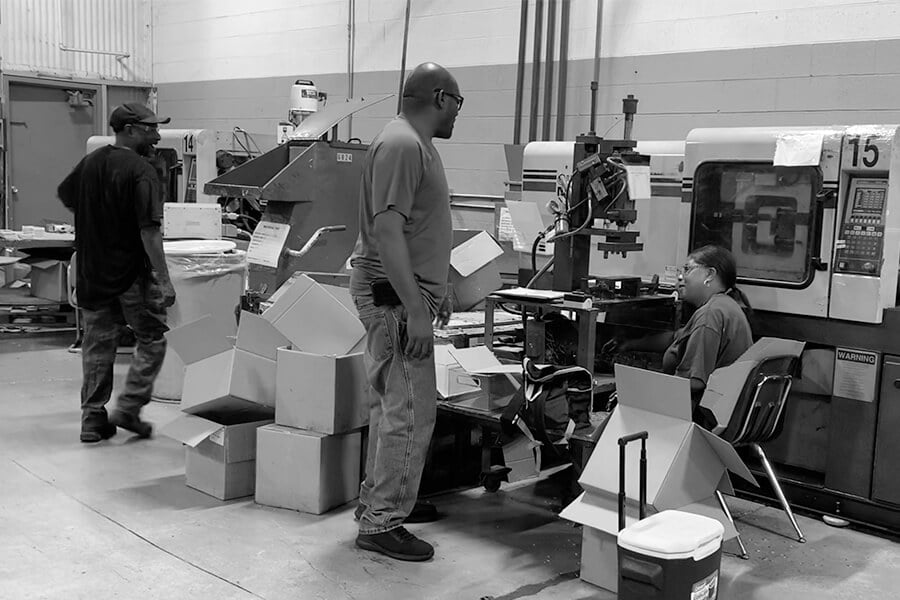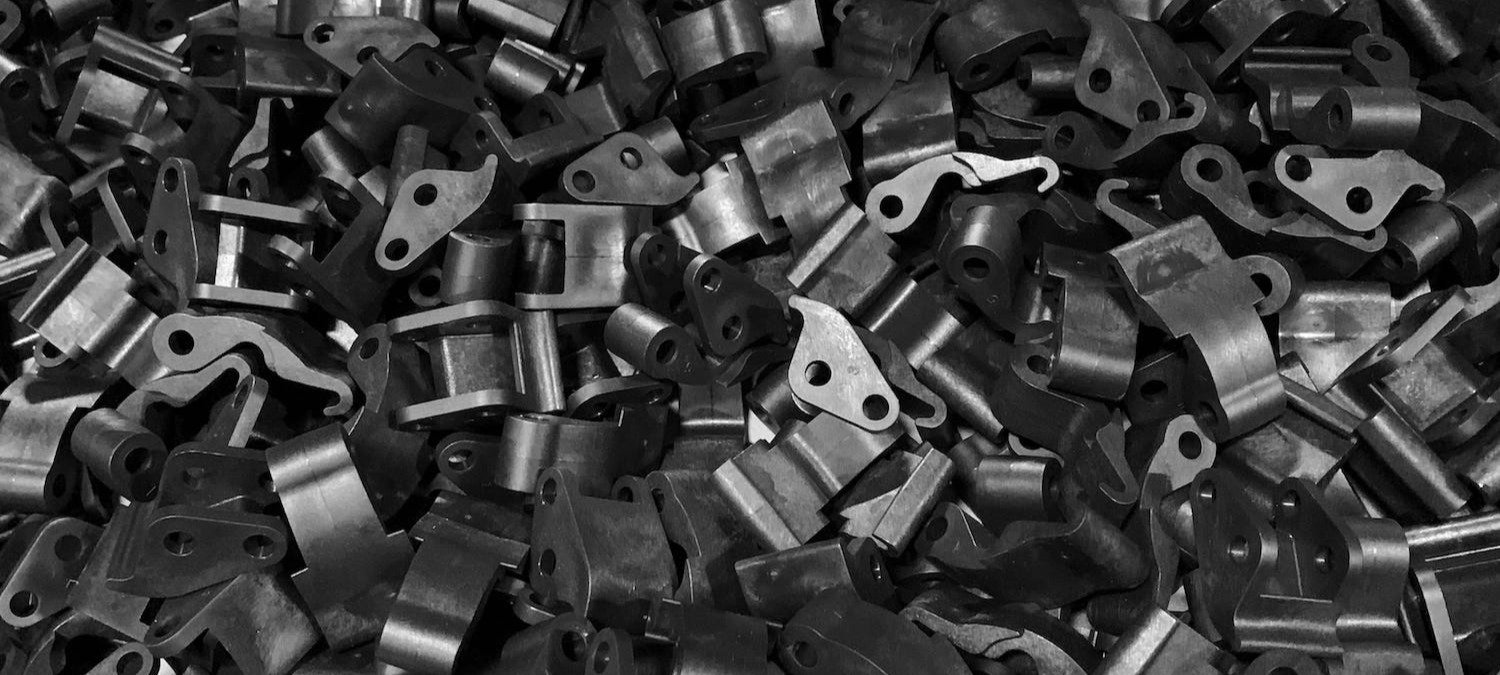The world of injection molding offers a vast host of techniques to bring your design visions to life. Insert molding stands out as a powerful tool for creating robust, multi-material parts in a single, efficient process. But what exactly is insert molding, and how can it benefit your project? Let's delve into the world of inserts and explore how they can elevate your injection molding endeavors.
What is Insert Molding?
Imagine a plastic part with a metal component seamlessly integrated into its core. That's the magic of insert molding! This technique involves placing a pre-made component, called an insert, into a mold cavity. The insert can be made from various materials like metal, ceramic, or even pre-molded plastic. Once positioned, molten plastic is injected around the insert, forming a strong, permanent bond. The final product emerges as a single, unified part, leveraging the strengths of both materials.
How Does it Differ from Overmolding?
While both techniques combine multiple materials, there's a key distinction. Overmolding typically involves two different plastics. The first plastic is molded, and then a second plastic is molded over the top, creating a layered effect. In insert molding, a prefabricated insert is used, offering a wider variety of material options for the non-plastic component.
Best Plastic Materials Used in Insert Molding
Insert molding thrives on its adaptability when it comes to plastic materials. The choice of plastic material depends on your project's specific needs.
Thermoplastics, known for their versatility and cost-effectiveness, are popular choices. Materials such as acrylonitrile butadiene styrene (ABS), polypropylene (PP), or Nylon offer a broad spectrum of properties that can be tailored to the final part's specific needs. Thermoplastics provide a balance of affordability, strength, and design flexibility.
On the other hand, for projects demanding specialized functionalities like heat resistance, the ability to conduct electricity, and flame retardant, can bring additives into play. Engineered resins can offer specialized properties that might not be achievable with just the insert material.
Is one better than the other? Not necessarily! The best choice depends on the desired properties for the final part. Consider factors like:
- Strength and Functionality: What properties does the plastic need to contribute to the overall part?
- Cost: Different plastic materials have varying price points.
- Aesthetics: Do you need the plastic to be transparent, colored, or have a specific finish?
What Type of Materials to Avoid in Insert Molding
While insert molding offers flexibility, some combinations might not be ideal. Materials with vastly different shrinkage rates could cause warping or stress cracks in the final product. Consulting with an experienced injection molding professional can ensure material compatibility for a successful outcome.
The Numerous Use Cases for Insert Molding
Insert molding truly shines when a project demands a combination of strength and durability. By strategically integrating metal inserts with plastic, the resulting parts become incredibly robust, making them ideal for applications in tools, appliances, and even automotive components. But the benefits extend beyond just strength.
Metal inserts can also unlock a whole new level of functionality for your part. Imagine incorporating electrical conductivity, efficient heat transfer, or even threaded connections – all thanks to the power of insert molding.
And let's not forget about weight reduction! By strategically using lightweight plastics around a metal insert, you can achieve significant weight savings while maintaining the structural integrity the part requires.
Finally, insert molding boasts a hidden advantage: assembly efficiency. Since the insert becomes seamlessly integrated during the molding process, it eliminates the need for separate assembly steps, saving you both time and labor costs.
In essence, insert molding offers a one-stop solution for creating strong, functional, and lightweight parts in a streamlined and cost-effective manner.
Industries Who Leverage Insert Molding
This versatile technique finds applications in diverse fields such as:
- Automotive: Parts like gear shifters, knobs, and engine components often benefit from insert molding.
- Consumer Goods: Appliance handles, power tools, and sporting equipment frequently utilize insert molding for added strength and functionality.
- Electronics: Connectors, heat sinks, and other electronic components can leverage insert molding for improved performance.
Medical Devices: Components requiring high precision and durability, like surgical instruments, can be strengthened with insert molding.
Navigating the Nuances of Insert Molding
Having explored the world of inserts and their potential to elevate your injection molding endeavors, let's delve into the practical considerations of insert molding. Understanding these factors will ensure you make informed decisions and achieve a successful outcome for your project.
Navigating the Nuances of Insert Design
Precision reigns supreme when it comes to insert design. The insert needs to be meticulously crafted to fit securely within the mold cavity. Imagine a puzzle piece – every dimension and tolerance needs to be exact to ensure a seamless integration with the surrounding plastic. This meticulous design ensures a robust and unified final part, where the insert and plastic function as a single, cohesive unit.
Mold Complexity: A Balancing Act
Compared to standard injection molding, insert molding often requires more intricate molds. This increased complexity can translate to higher upfront costs. However, the long-term benefits of insert molding need to be factored in. By incorporating inserts, you can achieve improved part functionality, like electrical conductivity or heat transfer, and potentially eliminate separate assembly steps. These advantages can often outweigh the initial investment in a more complex mold.
Material Compatibility: The Key to Success
Choosing the right combination of plastic and insert material is vital for a successful outcome. Imagine trying to combine materials that expand or contract at vastly different rates – the final product would likely warp or crack under pressure. Factors like thermal expansion rates and chemical compatibility need to be carefully considered. An experienced injection molding professional can be your guide through this selection process. They can help you choose the optimal material combination for your specific project, ensuring a final part that is both functional and durable.
For simple shapes or low-volume production runs, other injection molding techniques might be more suitable due to cost considerations.
In conclusion, insert molding offers a powerful way to create robust, multi-material parts in a single, efficient process. By integrating the strengths of different materials, you can achieve superior functionality, durability, and cost-effectiveness for your project. However, understanding the process, material considerations, and potential limitations is key to making an informed decision.
Ready to explore the possibilities of insert molding for your next project? Contact Molding Dynamics today. Our experienced team can guide you through the design and manufacturing process, ensuring your vision becomes a reality. We'll help you choose the right materials, create effective insert designs, and navigate the complexities of mold development. With Molding Dynamics by your side, you can unlock the full potential of insert molding and bring your innovative ideas to life.






